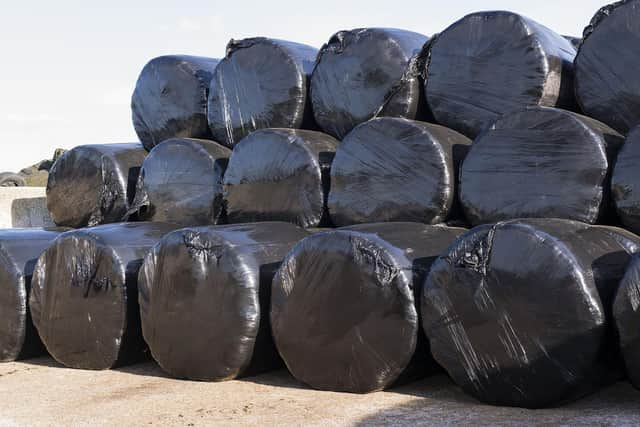Making better quality and more cost effective baled silage
and live on Freeview channel 276
This means that they are now more dependent on compound feed which has also increased significantly in price due to the war in the Ukraine. In addition numbers of dairy cows, cattle and sheep in Northern Ireland have also increased over the last two years so there are more livestock to feed.
However due to ongoing technology improvements the baled silage system is far more cost effective and environmentally friendly. Silage quality is better and there is more kgs of dry matter (DM) available per bale for feeding to valuable livestock. The relatively new Film & Film (F&F) system is an innovative dual wrapping method, which combines the use of SilotitePro balewrap and Baletite netwrap replacement film.
Advertisement
Advertisement
This results in better shaped and more compact bales which can better withstand handling and have a longer storage life. Using baler film instead of netwrap the F&F wrapping system helps to reduce silage losses virtually eliminating mould growth and preventing silage becoming enmeshed during feedout.


By using film to bind the bale together, removal and recycling of the film is made easier as the farmer is only left with one product to recycle and can avoid the time consuming job of separating netwrap from the stretch film.
Baletite enhances the ensiling process and protects the contents of the bale by creating additional layers of protection around the bale. It provides an air barrier that helps to prevent the growth of white mould, which can cause valuable silage losses. Using Baletite as an alternative to netwrap results in better shaped bales, by exerting a tighter grip around the bale circumference.
Excellent trial results have been obtained in Wales by Dr. Dave Davies of Silage Solutions Ltd, who acts as an independent consultant to the Silage Advisory Centres. Dr. Davies is a former Senior Research Scientist at the Institute of Grassland & Environmental Research (IGER) at Aberystwyth in Wales.
Advertisement
Advertisement
On a trial he conducted on a commercial farm in Wales under real working farm conditions Dr Davies demonstrated that Film & Film wrapped bales had:
- 7.5% less dry matter (DM) losses compared to netwrap bales due to an enhanced fermentation process.
- 80% less DM losses compared to netwrap bales due to mould formation on the bale.
- The reduced losses that resulted through the use of the F&F wrapping system meant that the farmer on this farm gained more forage to feed to his herd. For a dairy farmer, preserving forage more successfully could provide a significant financial benefit as follows:
Advertisement
Advertisement
This farmer gained an average of 7.35kg DM per bale using the Film & Film wrapping system.
As 1kg of DM = 11.8 MJ ME (Metabolisable Energy), this means that the farmer gained 86.73 MJ ME per Film & Film bale (7.35 kg DM x 11.8 MJ ME).
In order to produce 1 litre of milk you need: ± 5.8MJ/litre MJ ME.
Therefore the 86.73MJ ME averagely gained for each of these bales could give an additional 15 litres of milk production
For a cattle farmer this was equivalent to an increase of 1.9kg of live weight gain per bale. The value of the extra silage conserved is around £4.40/bale.